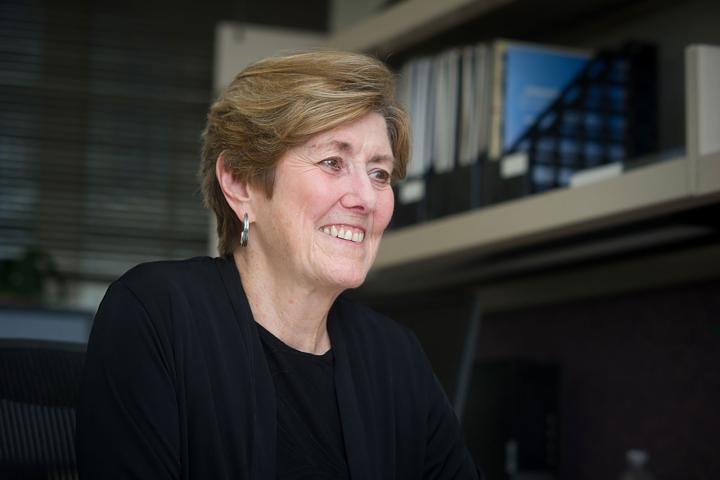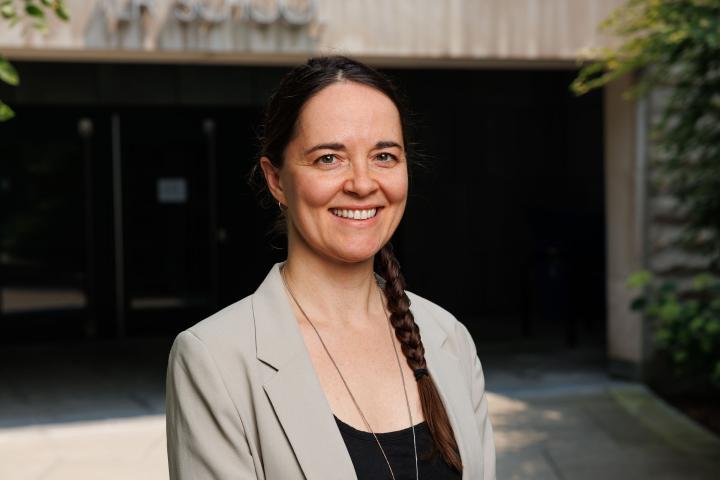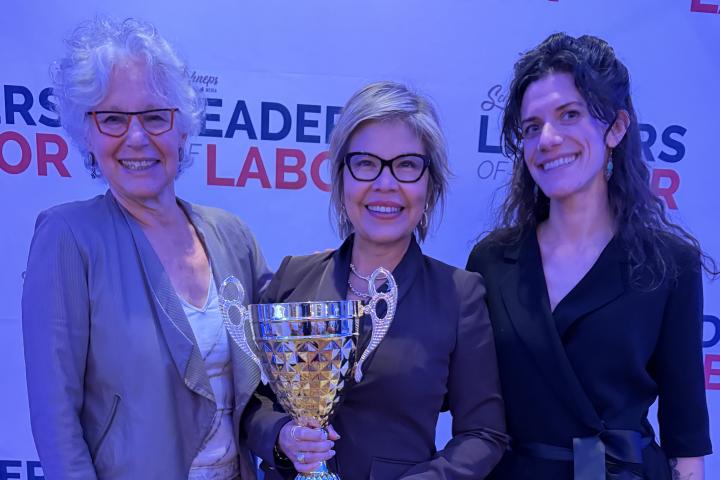Dean Colvin Brings an ILR Perspective to Keynote on Future of Work
ILR Dean Alex Colvin delivered the keynote address at the Oct. 14 “Emerging Tech Dialogues: The Future of Work: People, Process, and Technology” conference in Statler Hall at Cornell University.
The event was the fourth in a series of semi-annual, all-day conferences aimed at considering complex questions about the role of technology and work.
The presentation, “Back to the Future: Technology and Work,” grounded the day with history and research about how technology has transformed work. “An enduring lesson,” Colvin said, “is that technology does profoundly transform work.”
Colvin, ILR’s Kenneth F. Kahn ’69 Dean, Martin F. Scheinman ’75, MS ’76, Professor of Conflict Resolution, kicked off his session with a brief history of the spoken lecture – from medieval times through transparencies on an overhead projector to the PowerPoints and Zooms of today. He went on to discuss how the Industrial Revolution shifted work from agriculture to factories.
These factories allowed consumer goods, such as clothing, to become much more affordable. “What changed was that we learned to harness power,” Colvin said. Before the advent of textile mills, “a suit of clothes cost roughly the same amount in inflation-adjusted terms as a car does today.”
Other examples in the keynote included the offset press, which required far fewer workers than the old-fashioned printing press, and the personal computer, which has transformed office work. Colvin shared that in 1995 the ILR School typically had one administrative assistant per two faculty members, but that “today we have a ratio of about 12 to 1.”
“Jobs don’t necessarily just go away,” said Colvin, noting that often they shift, and observing that we have fewer horseshoers and more auto assembly line workers these days. An important question to ask, he said, is “are these good jobs, or not good jobs? Technology can have uneven effects.”
Colvin pointed to the U.S. steelmaking industry as an example, explaining that between the 1980s and the 2010s, over half the jobs disappeared, even though steel production remained steady overall. The jobs that were cut were replaced by less physically demanding, higher-wage jobs that use computerized processes and remote automation. “A lot of people’s livelihoods disappeared,” Colvin said. “It was a shift in job quality and job quantity at the same time.”
What happened to the rest of the jobs? Showing data on declining manufacturing employment in Allentown, PA, “It turns out Billy Joel’s right,” said Colvin, “they did shut all the factories down.” He explained that jobs didn’t disappear forever. Work shifted to service industry jobs and overall employment in Allentown continued to grow.
Looking to the present, Colvin discussed research by Alex Kowalski, ILR assistant professor of human resource studies, on the use of robotic technology in fulfillment centers where workers fill boxes using three techniques to “pick” goods: walking around a warehouse with a cart to access items, moving items from a conveyer belt into boxes while standing still, or having a robotic self-driving rack with an arm retrieve items. By surveying the workers, Kowalski found they preferred walking around with a cart because it provided better job quality and variety than working with a robot.
Colvin also shared findings from research he co-authored with Rosemary Batt, ILR’s Alice H. Cook Professor of Women and Work. Studying the use of information technology in Verizon’s call centers, they found that different organizational strategies generated different results. Organizational strategies, including jobs that allowed employees more discretion to solve problems and used technology to improve information accessibility, had a lower quit rate. However, organizations that designed jobs using technology to more tightly electronically monitor employees had a higher quit rate. “Any job that monitors employee restroom time is a bad job,” said Colvin.
Colvin’s conclusion reminded attendees that they have a role in shaping the future: “Technological change is super-powerful. However, the way in which it happens isn’t fixed. Ultimately, what we need to think about, carefully, is how we can incorporate it into our work design and into the work, about the adoption process, and about that human part.”
During the conference, Colvin also participated on a panel titled “Future of Work.”
Its focus was on how attendees can adapt to changes in the workplace, and Colvin’s contributions centered on using lessons from history and research to move forward in the present.
He noted that research tells us that “more agile organizations are more successful.”
“Technological change does keep happening,” Colvin said. “We are going to have to adapt to it. But there are also constants. People are still people. Work is still work.”


